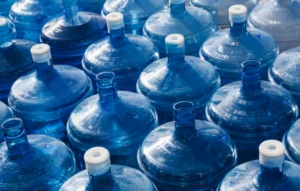How Many Litres in a Gallon?

Instant Google search: available to answer questions granted the users both the biggest favour and hindrance of impatience. We expect to find a straightforward answer to every question, given in one sentence, or one number so further research would be unnecessary. Just like that, it might seem that asking how many litres are in a gallon should give a direct answer or one precise number. However, in reality, it is not as easy. There are a few different variables to take into consideration to be able to answer that.
The first one is the difference between US customary gallon and the British Imperial gallon. (One US customary gallon is equal to 3.7854118 Litres, while the British gallon is 4.54609 Liters.) The US system actually takes its origin from the system of measurements established in England in the 18th century. The Imperial system was created a century later, in 1824 in the UK with slight modifications from previously established numbers. That is why those systems are very similar to one another.
(Example, American brewers (US measure system) use 12 US-ounce bottles, containing 355 ml. Canadian brewers (Imperial measuring system) package their bottles with 341 ml per container.)
At the same time, you want to find out whether or not the US gallon is the dry gallon or the fluid gallon, which is equivalent to 2150.42 cubic inches or approximately 4.405 L
The second one is to understand the difference between litres and gallons in the international standard system or measurement metric system.
The litre, as a unit of volume, is considered equal to 1000 cm³ or one cubic decimeter. At the same time, there is 1000 cm in a decimeter, and cubed just refers to the fact that the object being measured has width, length, and height, as per Science Trends.
Originally one litre was defined as 1 kg of water at the standard pressure. However, a more precise measurement of the mass of one kilogram showed that the kilogram cylinder was too large. Hence, the connection between one litre and one kilogram had to be redefined. As litres are used to measure items that adapt to the size of a container (fluids), they can also be used to calculate density. Yet, calculating density in kilograms per litre enables comparison of solid with water’s density. A litre of water is close to one kilogram only at peak density which happens at 4C approximately. That is why comparing one litre to one kilogram would not always be accurate.
Now, to gallons. Although the original word has French roots, gallons were used to measure beer and wine in England.
Both the US measurement system and British imperial systems recognize the gallon as a unit of measurement for fluids. However, the accepted volumes differ. To put it in perspective, such countries as the UK, Canada, some in the Caribbeans, British Virgin Islands, the Cayman Islands, the Bahamas, Antigua and Barbuda, Dominica and some others use the Imperial gallon measure.
Meanwhile, the US gallon is accepted in such countries as the US, Colombia, the Dominican Republic, Belize, Liberia, Ecuador, Guatemala, El Salvador, Haiti, Nicaragua, Peru, and Honduras.
Despite all the theories, it is actually quite simple to convert between gallons and litres. The only thing you have to keep in mind is which measuring system you select (probably depends on the country you live in). Approximately there is about 4 L in a gallon.
But to make the conversion more precise, let’s look at the following example of counting how many litres would be in a five-gallon container. Taking into consideration the British Imperial gallon measuring system (4.54609 Liters), you would have to set up a conversion problem and keep volume with litres on the left (you would want litres to be the unit left over.) Follow this formula to calculate:
Litres volume = (given gallons) x (4.546 L/1)
Litres volume = (5 x 4.546) L
Litres volume = 22.73 L per 5 gallons